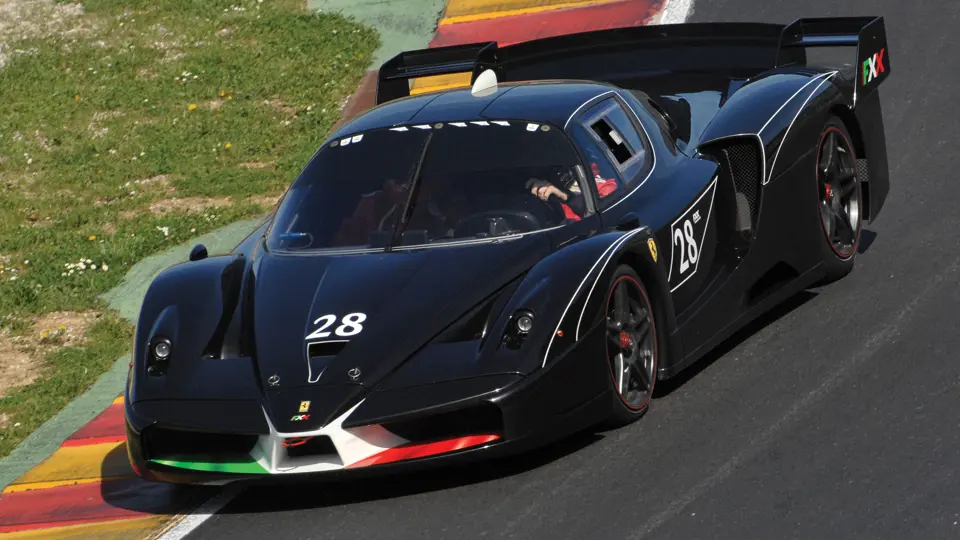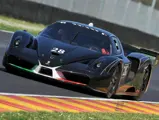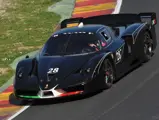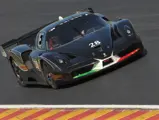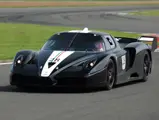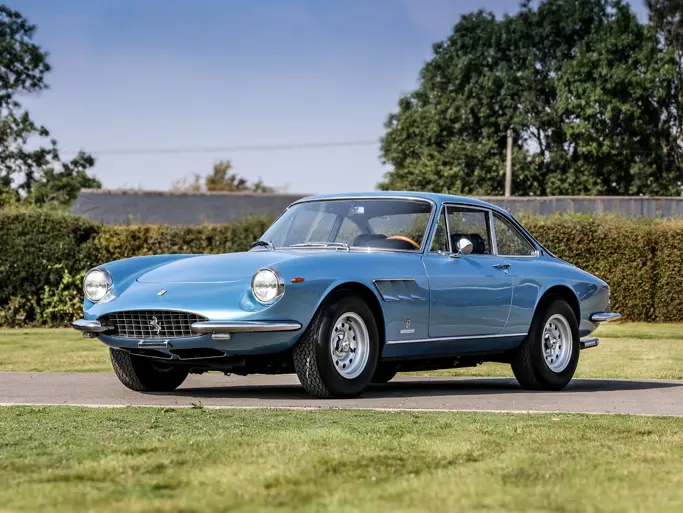860 bhp, 6,262 cc DOHC V-12 engine with four valves per cylinder, Bosch Motronic ME7 integrated digital electronic fuel-injection, F1-type coiled sump lubrication, six-speed paddle-shift F1-style transmission, four-wheel independent front and rear suspension with wishbones, coil springs, anti-roll bar and telescopic dampers, and carbon ceramic brakes with anti-lock. Wheelbase: 104.3"
• Ferrari's most exclusive, highest-performance production car; one of only 30 built
• Just one owner from new; always kept at the Ferrari factory’s Corse Clienti department
• Factory-equipped with Evoluzione upgrades to 860 bhp; stunning colour combination
Although he had many sports car-building philosophies, Enzo Ferrari’s ultimate legacy is perhaps his simplest: for a machine to best reward its driver by providing tactile feedback and blistering performance on the open road, it must have a direct link to its racing heritage.
Ferrari’s Enzo
It was fitting, then, that the engineers at Ferrari chose Enzo himself as the namesake for their most ambitious and advanced project ever: a high-performance, 12-cylinder, mid-engine Berlinetta so closely linked to the automaker's success in Formula One racing that it could be called a competition car for the street.
Wrapped in angular Pininfarina-penned bodywork aimed more at aerodynamics than impressing show-goers, although it manages to do that, too, the Ferrari Enzo boasts technology lifted directly from the company's Formula One efforts. Building on four consecutive years of Formula One World Championships, Ferrari transitioned away from the approach it had taken with the GTO, F40 and F50 that came before it.
Pininfarina was commissioned to create an angular, aerodynamic shape that would inspire future high performance Ferraris. The Enzo clearly departs from the flamboyance of the F50, the aero-inspired wedge profile of the F40 and the voluptuous curves of the GTO. It stands on its own, yet it is uniquely Ferrari and clearly linked to the latest Formula One race cars.
Ferrari's engineers sought to create a driving experience and interface inextricably connected to the Formula One cars then driven by Michael Schumacher. With a top speed of 350 km/h (217 mph), it was essential that the Enzo's aerodynamics keep it properly planted to the road. Ferrari Gestione Sportiva, the automaker's competition arm, sought a high degree of downforce that would still offer flexibility for the numerous driving conditions that production Enzos would encounter.
Unlike a dedicated Formula One race car, the Enzo would not come with a dedicated pit crew to help optimise the car for differing road conditions. Thus, the engineers created a series of active mechanical spoilers that would automatically engage at certain speeds and work directly with the Enzo's three-mode stability control system for maximum grip at all speeds.
The Enzo's 12-cylinder engine heralded a new generation of flagship powertrains for Ferraris. Ostensibly based on the architecture of the award-winning and highly-vaunted V-8 that powers the Maserati Quattroporte, the V-12 nonetheless proved its merit on its own.
The cylinder head, with its pentroof-like combustion chamber and four valves per cylinder, is clearly derived from the company's Formula One technologies. Meanwhile, the Enzo's V-12 uses a wraparound lubrication sump that incorporates the main bearings and a specific oil recovery circuit to increase lubrication efficiency. Bosch Motronic ME7 engine management helps produce an impressive 110 bhp per litre from the 6.0-litre V-12.
For drivers, however, one of the most obvious Formula One connections is the car's gearbox. The semi-automatic F1 transmission tells its drivers when to select gears, thanks to LED lamps mounted on the steering wheel. Although some owners complained of “abrupt” shifting during “normal” driving, the transmission's 150 millisecond gear changes earned it a solid reputation on the track.
The blistering Enzo would prove to be the gateway into a much more advanced series of engineering projects. Fully living up to Enzo's mantra, the sports car named after him has spawned a handful of variations aimed at enhancing the automaker's performance development credentials.
The FXX Project
Using the Enzo as its base, the FXX took the concept to another level. Just 30 were built, each kept under Ferrari's close supervision and sold only to owners who would use them at select race tracks carefully selected by the automaker.
Powered by an up-rated 6.3-litre variant of the V-12 that powered the standard Enzo, the FXX was rated at 790 horsepower, and its upgraded aerodynamics package increased the top speed to 227 mph. To best take control of the power, the FXX utilised an even faster-shifting Formula One transmission aimed solely at closed course use.
From Ferrari's standpoint, the FXX's most important technological innovation was its integrated data monitoring telemetry. The 30 FXX “test subjects”, including Michael Schumacher himself, were undoubtedly delighted to be included in Ferrari's product- development process. Nearly 40,000 kilometres of closed course use were logged during the FXX research period. Perhaps the best display of the FXX’s performance potential was on the UK-based television series Top Gear, where Schumacher’s own car virtually shattered the existing lap records, held by such cars as the Gumpert Apollo, Koenigsegg CCX, Pagani Zonda and others, with a stunning lap time of 1 minute and 10.7 seconds, making it the fastest car to ever lap the show’s test track in its history.
The FXX Evoluzione
Yet, the FXX only proved a stepping stone to the most aggressive production Ferrari ever delivered to consumers: the FXX Evoluzione. Ferrari integrated everything it learned during the FXX project into the FXX Evoluzione. Never before was Ferrari's street car development so integrated with its competition department.
The second generation Evoluzione version is Ferrari's most advanced GT car ever, built with an 860 horsepower V-12, a sequential gearbox that can perform shifts in just 60 milliseconds and a curb weight of just over 2,500 pounds. The FXX Evoluzione goes from zero to 60 in 2.8 seconds – an extraordinary, virtually unbeatable time.
Virtually no part of the FXX has been left untouched by the Evoluzione kit. Changes start in the engine bay, where the 6.3-litre V-12 engine now develops a staggering 860 horsepower at 9500 rpm, 1000 rpm higher than before. Shifts are even faster at 60 milliseconds, versus 80 milliseconds for the old gearbox, and new gear ratios have been optimised for the new state of engine tune.
A new traction-control system also has been developed, which offers the driver on-the-fly adjustment through nine different settings, all controlled via a switch on the centre console. The system was designed to be more responsive to individual driving style, allowing the car to adapt to the driver rather than vice versa. Ferrari says another advantage to the redesigned traction control, when paired with new front suspension geometry, is decreased tyre wear. The Brembo brakes and composite ceramic material discs have also been redesigned to double pad life.
The last big-ticket change is to the bodywork of the FXX. The Evoluzione kit adds a new rear diffuser and rear flaps, which increases aerodynamic efficiency by 25 percent, as well as rear downforce, both good ideas on a car capable of exceeding 200 mph.
The FXX Evoluzione on offer is a one-owner example from new, and it has received the Evo factory upgrade. Used only at the Ferrari FXX-specific events and for the rest of the time, it has been kept at the Corse Clienti department of the Ferrari factory. Finished in black and fittingly accented by the Italian ‘Tricolore’ on the nose and rear of the car, this FXX has never been crashed or damaged, and it is accompanied at auction with a number of selected spares. In short, as offered, this stellar, one-owner FXX Evoluzione affords its fortunate next owner the unbelievably rare opportunity to join the limited roster of FXX owners – surely an opportunity unlikely to reoccur anytime soon.


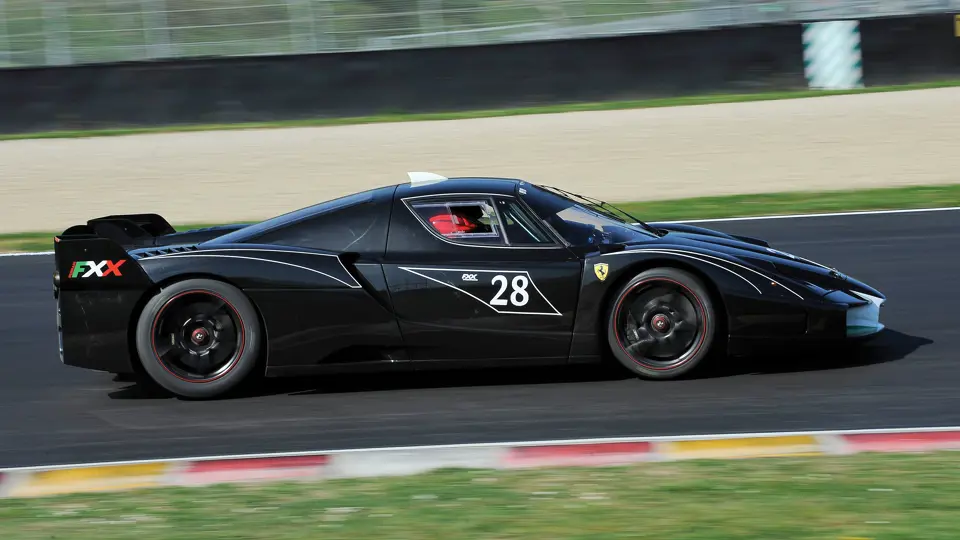

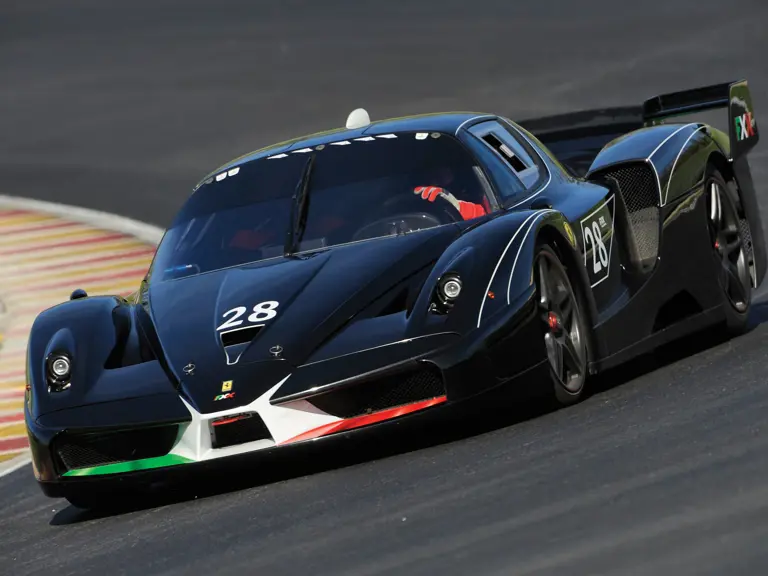
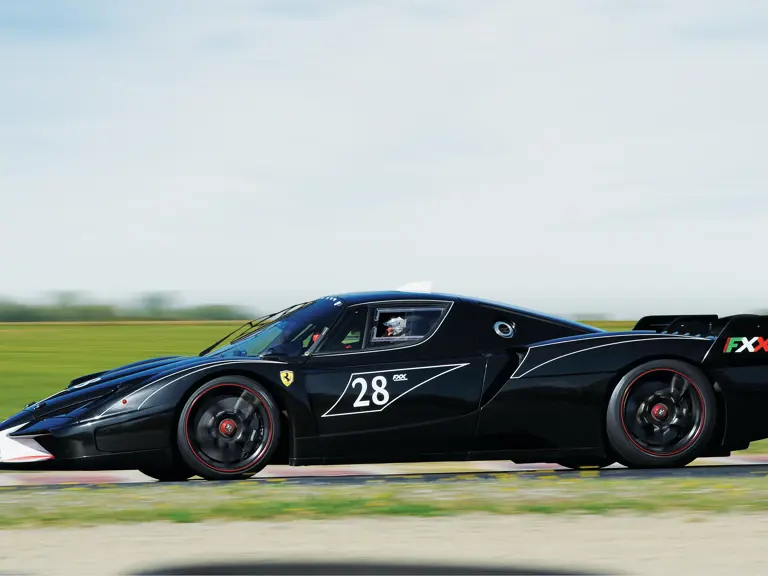
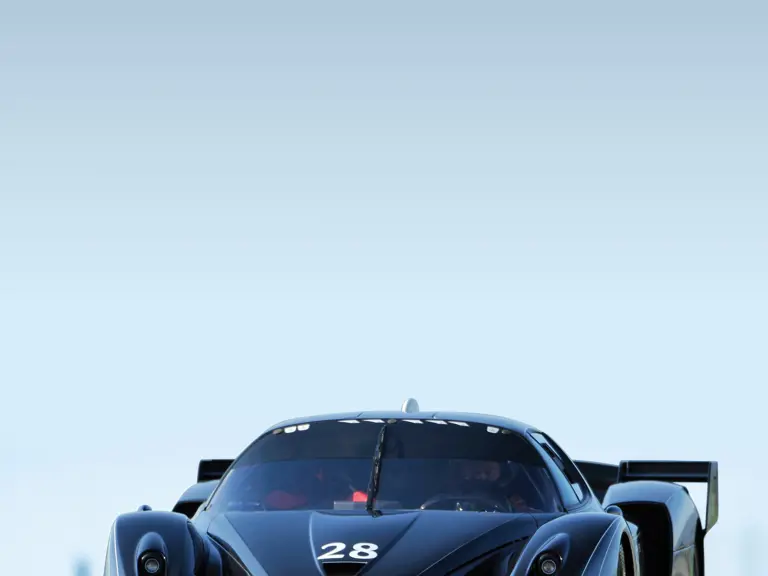


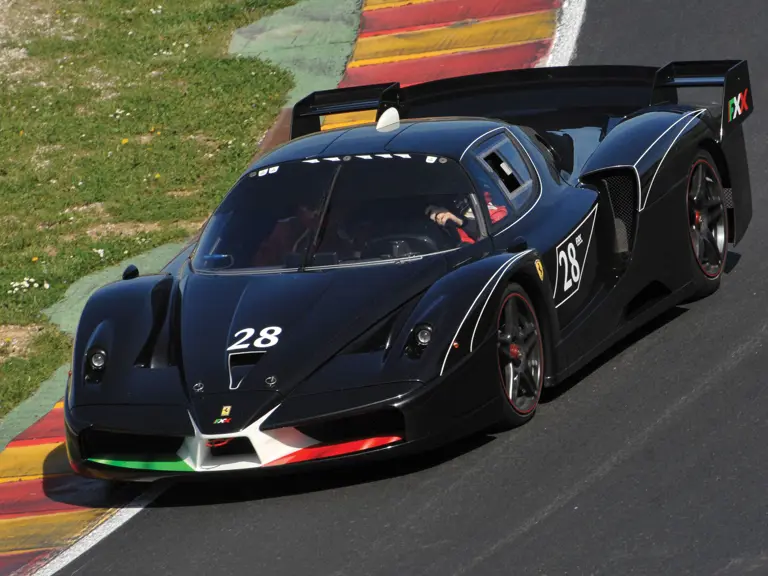

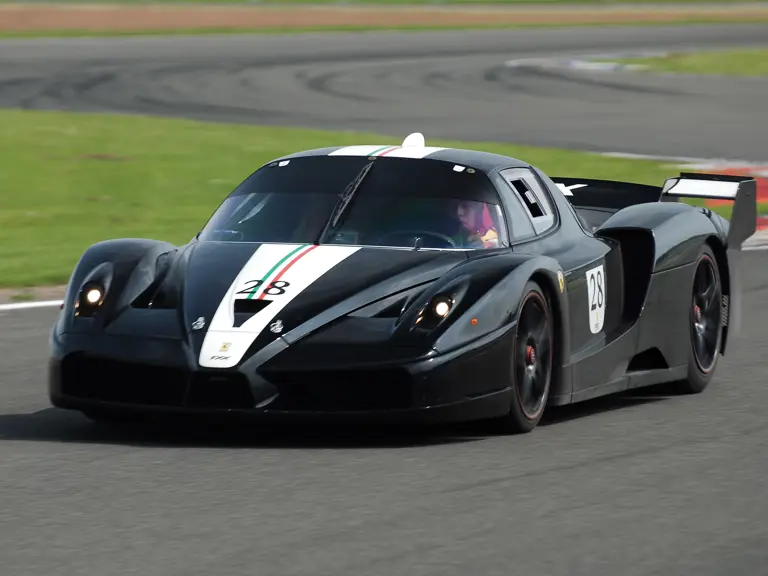

 | Monaco, Monaco
| Monaco, Monaco

